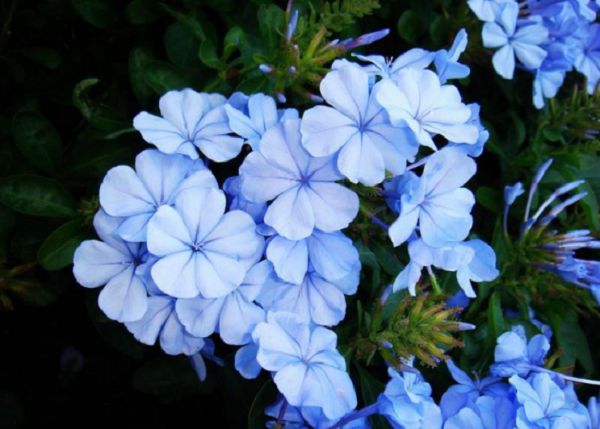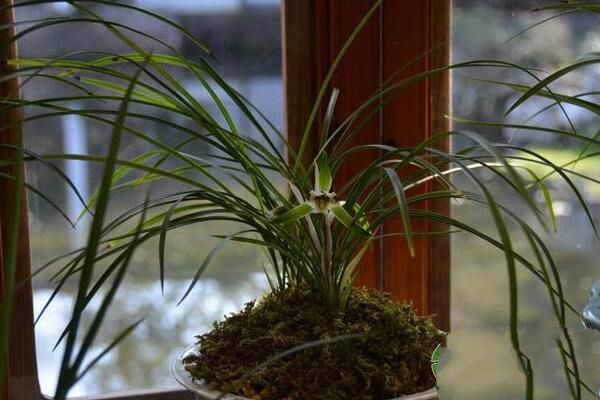How do orchids grow best? Six main points of orchid cultivation

Orchids are one of the largest and most diverse families of flowering plants. With its unique leaves, flowers and fragrance, it gives people a very noble and elegant image. Ancient and modern celebrities to its high price, was compared to flowers in the gentleman. So how are orchids grown? What good ways are there in farming? What do orchids have to pay attention to? Let's take a look at it together with Xiaobian.
Orchid cultivation methods (basic knowledge):
Best breeding time: March to April is the best time of year for orchids to grow.
Best growing soil: orchid cultivation soil, suitable for use with soil containing sufficient decay loose soil or self-made with acidic sandy nutrient soil. Acid soil with a pH value of preferably between 5 and-6.5.
Growth humidity requirements: orchids grow well when the relative humidity of the air is 60--70{bf}, too dry or too wet are easy to cause orchid disease.
Best growth temperature: orchid love cool, avoid sultry, orchid best growth temperature is 18--30 degrees Celsius, but because of its origin in the south, do not tolerate cold, so summer days should pay attention to ventilation and shade or placed in a cool and ventilated environment, winter should be placed in a warm place to avoid wind, winter festival should also be displaced indoors, so as not to frostbite.
The best growth light: orchids like shade, not more sun, if conditions, spring, autumn, winter sunny days, 8 am to 10 am to move it to the sun for 2- 3 hours; summer morning about 8 am to let it bask in half an hour, beneficial to orchids.
Notice of orchid cultivation (six cultivation points):
Fertilizer application: in June-July when orchid leaf bud elongation about 1.5 cm, can apply 1-2 times thin decomposed liquid fertilizer (not with chemical fertilizer). In August to September, apply 1-2 times of decomposed thin liquid fertilizer. The orchid of element heart kind, can apply 1-2 times plant ash extract, the effect is very good.
Watering points: flowers like cool and damp, but wet refers to the soil to keep wet, not more watering. When the climate is dry, it is advisable to use a fine hole watering pot to pour the leaves and pot soil to a slight humidity, and cut not to pour too much, so that the roots of the flowers accumulate water. When the weather is dry in summer, spray water on the leaves, preferably 2- 3 times a day. In winter, if the soil is not too dry, do not water. However, spring, summer and autumn should not be too dry.
Trimming essentials:
1. Keep pruning in orchid culture. When the old leaves are withered, they should be cut off in time to facilitate ventilation, and the tips of some leaves should also be cut off. In particular, leaves with pests and diseases should be removed in time to avoid infection. When cutting off virus-infected leaves, do not cut off disease-free leaves with scissors to prevent virus infection.
2. After the flower buds of precious orchids are unearthed, if there are too many flower buds, strong buds should be kept, and the remaining thin flower buds should be removed. It is advisable to keep 1-2 flower buds per pot. If there are too many flower buds, it will not only make the flowers bloom badly in the year, but also consume too much maternal nutrients to affect the flowering of the next year. Usually, orchid flower buds cannot be cut off.
3, spring orchid flowers, about half a month, that is, the flowers need to be cut off; summer orchid flowers, to the inflorescence on the last one after the opening of a week, should also be cut off inflorescences. Precious varieties should not be pollinated and fruited, otherwise it will affect the flowering of the following year. If it is used as cross breeding, it needs to be cultivated to make its fruit full and mature.
Pot soil replacement: The environment for cultivating orchids should be well ventilated, humid and pollution-free. Orchid basin to choose high basin, thick on the thin, with multiple drainage holes, or basin wall with drainage holes.
Because orchids grow slowly, they can be replaced once every 1 to 2 years after they die. When the basin is filled with tile particles, slag, etc. about 3 cm at the bottom of the basin to facilitate drainage. Then, put in a layer of nutrient soil, then put the orchid seedlings into the center of the pot, straighten the roots, let them naturally stretch, gently lift the orchid seedlings when filling to half, shake the flowerpot at the same time, make the soil and roots closely combine, fill the soil 2~3 cm away from the mouth of the pot, gently compact with hands.
Breeding Points:
(1) Orchids are mainly distributed in the southeast and southwest regions. Many wild was born under the moist valley sparse forest and the shade place of the rock edge, therefore likes the warm, the moist climate, likes the shade humidity, the request shade degree is 70%~90%, avoids the high temperature, the dryness and the strong light.
(2) In orchid cultivation, old withered leaves and diseased leaves should be cut off continuously to facilitate ventilation. After the flower bud emerges, each plant should keep a strong flower bud, the rest should be cut off, so as not to consume too much nutrients and affect the flowering of the next year. After the flower withers, cut off the flower sprouts.
(3) winter should pay attention to cold, ground orchid cold resistance is strong, orchids are required to winter temperature is higher, should be moved indoors or plastic shed cold, so as not to be frozen, room temperature is best kept at 10~15℃, indoor maintenance should pay attention to ventilation. Spring climate gradually warmer, ah gradually moved orchids to the courtyard or balcony.
(4) The best way to cultivate orchids at home is natural rainwater, stream water, well water and river water. If tap water is used, it should be stored in a vat first, and used after sun exposure to remove bleaching powder. If tap water is used for a long time, it will gradually alkalize the cultivation substrate. Ferrous sulfate can be applied at intervals to increase soil acidity. In addition, irrigating orchids with fermented rice washing water can also keep the soil slightly acidic.
Disease and pest control: sterilization treatment (in the sun can be exposed) to prevent disease occurrence, orchids in rainy and high temperature season is most likely to occur white silk disease, can be used to prevent the spraying of 800 times of topzin or bordeaux solution. If the disease is serious, 500-750 times of thiophane can be used, spraying once every 7-10 days. Scale insects occur most frequently in insect pests. This insect is attached to the base of leaves. If scale insects are found, they should be eliminated in time. If you want to avoid scale insect invasion, from April onwards, you can use "1059"2000 times liquid control.
In order to inhibit the occurrence of orchid diseases, in addition to the usual pot soil humidity should be moderately controlled, but also in the selection of flower pots as much as possible with clay pots, less with glaze pots. Especially for poor growth of new orchids dug up from the mountains must be planted in clay pots. This makes the pot soil easy to dry, can promote orchid growth, reduce disease.
Cultured orchids hydroponics and soil culture:
Orchid hydroponic method: hydroponic orchids should be carried out in summer, to make the roots turn green as soon as possible, to keep warm in winter, and occasionally to remember to cut off the roots when they become soft and rotten.
Orchid soil culture method:
1. Plant materials should be loose, breathable, drained, water-retaining and rich in organic matter.
Second, the basin soil should be kept moist, not wet for a long time, to moisten for the degree.
Third, control the environmental humidity, temperature, ventilation and lighting. Humidity 80{bf} or so, temperature not lower than-5 ℃, light shading 85{bf} or so.
Fourth, thin fertilizer and frequent application, less than 5 degrees higher than 35 degrees do not apply.
5. Do a good job in pest control.
Tips:
Orchids are mostly grown in an air-ventilated environment, so they need a loose, ventilated culture medium and a clean, air-ventilated environment. To keep orchids well, attention must be paid to ventilation, including ventilation around the roots and distance between orchids. Keeping fresh air around orchids helps photosynthesis and respiration. Orchids suffer from diseases and insect pests due to poor ventilation, and the tips of leaves are often scorched. In summer, ventilation should be strengthened, and exhaust fans or electric fans can be used to circulate air if conditions permit.
Related
- Is the orchid suitable for indoor use? Is it good for the body?
- How to prevent the empty root of orchids?
- What to do after the crab claw orchid is withered?
- Why are the leaves of orchids always yellow? Fertilizing and watering.
- Can the root of the gentleman orchid be saved if it is rotten?
- Diagnosis and treatment of cotton-blowing beetle insects in Cymbidium
- There is a way for a gentleman's orchid to rot.
- What is the most suitable temperature and humidity for the orchid?
- How to raise a gentleman's orchid? Cultivation techniques of Cymbidium
- How to prepare the nutritive soil for the cultivation of Cymbidium



